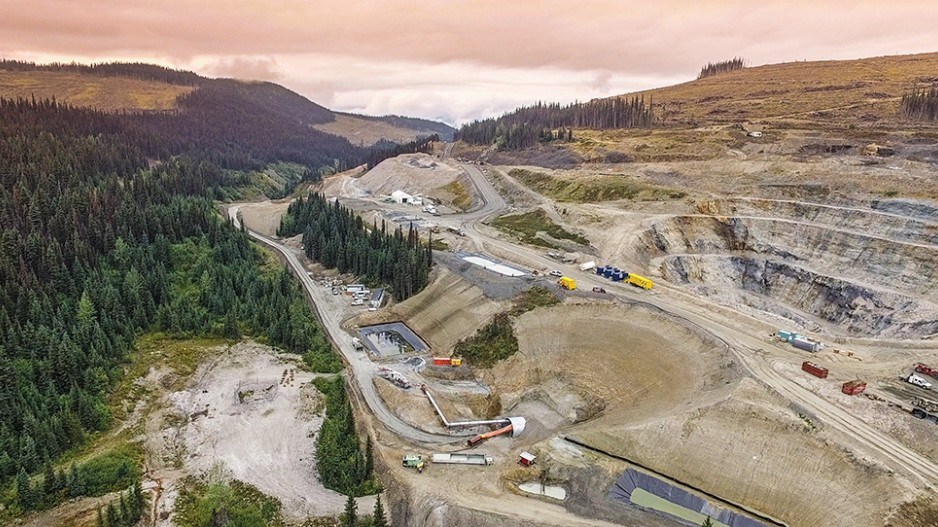B.C.’s next new gold mines could be in production as early 2022 and promise to breathe life back into B.C.’s historic Barkerville region. If it pans out, the play could be worth the annual total gross income of all mining in the province.
Osisko Gold Royalties Ltd. completed a reverse takeover earlier this month of shell company Barolo Ventures Corp. to form Osisko Development, which will assume the development of the Cariboo Gold project.
That’s the large gold district assembled by Barkerville Gold Mines (BGM), which Osisko Royalties acquired in November 2019.
The announcement of the new company came on the same day Osisko published drill results confirming high grades of gold for the Cariboo Gold project, which is not so much a single gold mine, but a district with multiple potential mines.
“The mineralized trend that we’ve mapped out is 83 kilometres long in two pieces that are parallel to each other,” Osisko Royalties CEO Sean Roosen told Business in Vancouver.
The most recent drill results confirm high grades of gold in multiple zones, notably Cow Mountain.
Mickey Fulp, publisher of the Mercenary Geologist, said the drill results published last week are “fabulous.”
“It’s not really news in the fact that they’ve been doing this for three-plus years,” Fulp said. “Those drill result were perhaps a nice little opportunity to show, once again, how good the project is.
“This Cariboo Gold project, it’s got six million ounces of gold and it’s growing. This is the best project in Canada, no doubt in my mind. This is Canada’s next big gold belt, and it certainly is B.C.’s next mine. There is nothing else on the horizon in B.C., as far as gold goes, that will be profitable in the near term.”
At the October 28 price of gold at US$1,876 per ounce, six million ounces of production is equal to US$11.2 billion, which is more than the entire gross income of total B.C. mining production in 2018, which Natural Resources Canada pegs at $9.8 billion.
Osisko is in the permitting stage for 4,750-tonne-per-day underground mine, with a feasibility study expected to be completed by the second half of 2021.
The company expects to have its Bonanza Ledge mine near Wells, B.C., in production in 2021’s first quarter. For Cow Mountain, it expects to have full permits in 2022, “followed by a short construction period given the significant infrastructure already at site.”
The infrastructure includes a functioning mill that was operated in 2018 during bulk sampling.
The capital cost of the project is estimated at roughly $458 million, about $70 million of which has already been spent. The project will employ about 1,500 workers during construction and 500 to 600 miners once the two mines are in operation.
Osisko’s track record includes building Canadian Malartic in Quebec, the country’s largest open-pit gold mine.
“If their guidance proves right, they’ll be in production at Bonanza Ledge next year,” Fulp said. “And they’ll be in production at Cow Mountain two years from now.”
Osisko also announced on October 13 that it has inked an agreement with the Lhtako Dene Nation (LDN) to provide jobs, training and contracting opportunities.
“This agreement confirms our relationship with BGM, to ensure we will work together to provide meaningful training, employment and business opportunities for LDN people,” Chief Cliff Lebrun said in a news release. “It also includes financial provisions that will enable the LDN to participate in the opportunities that the project provides.”



